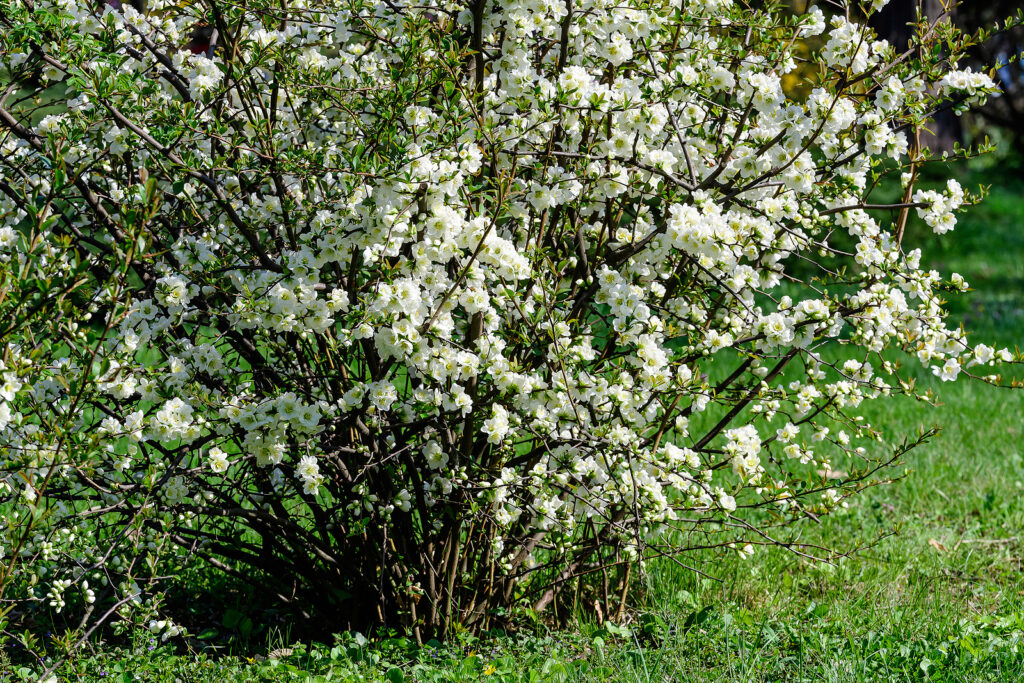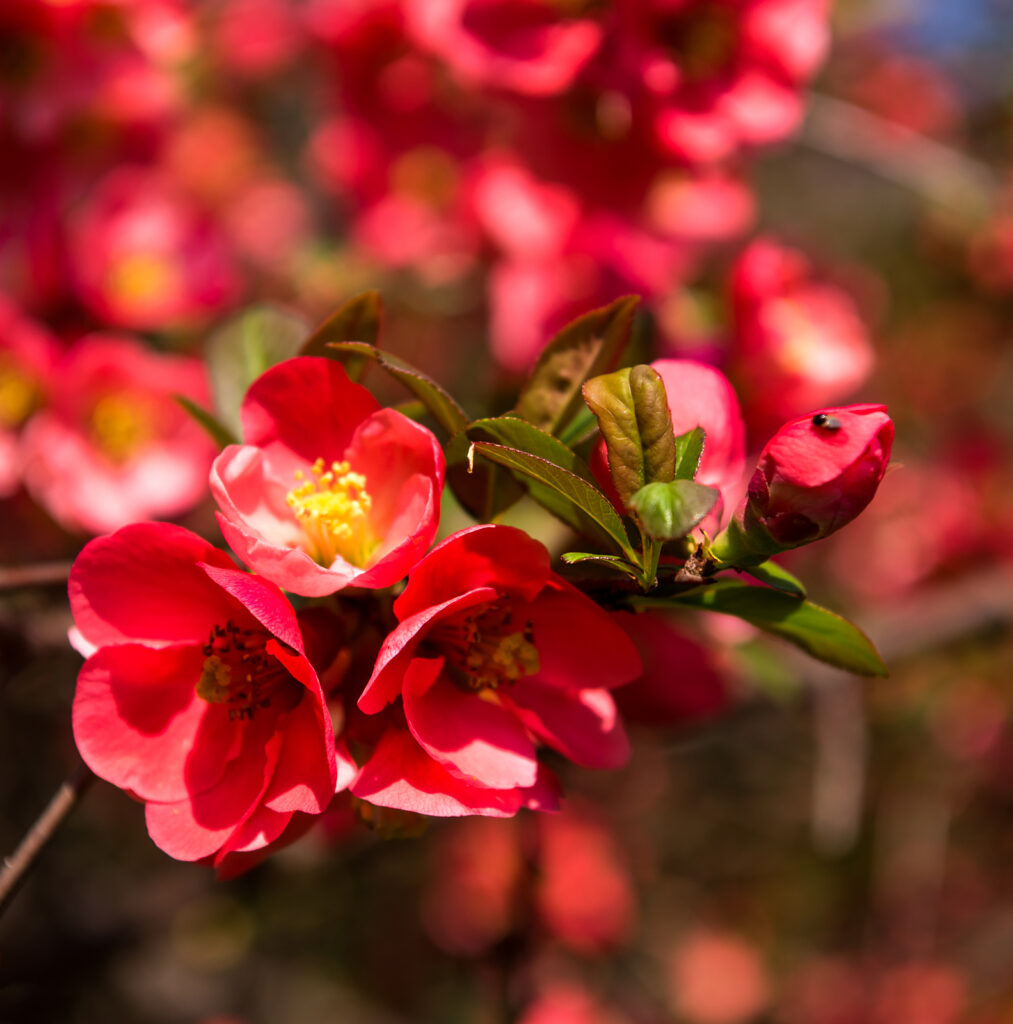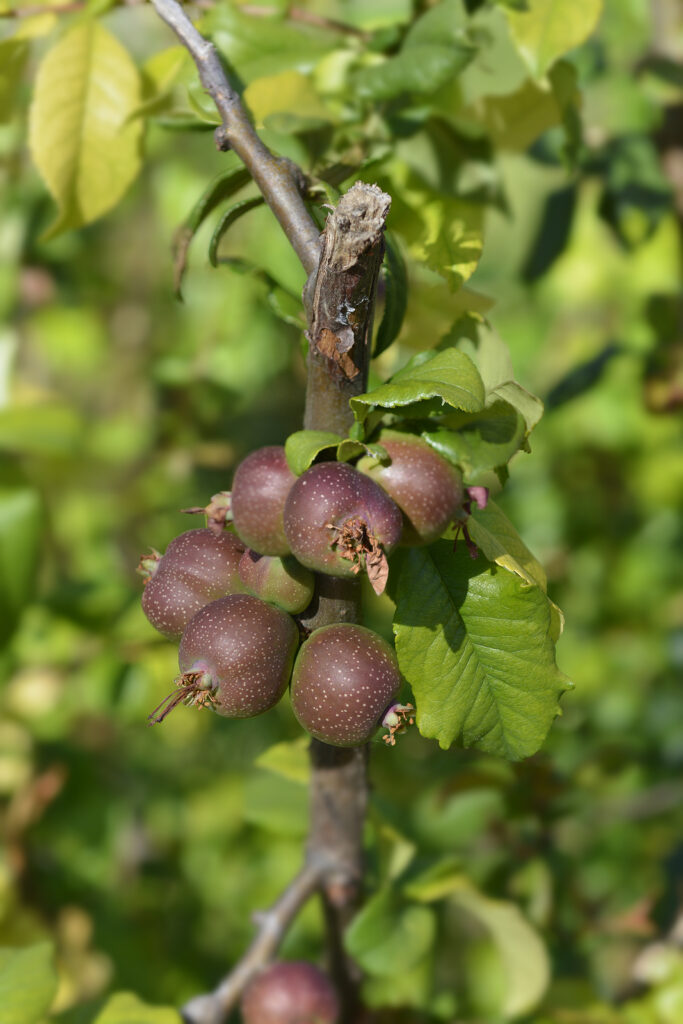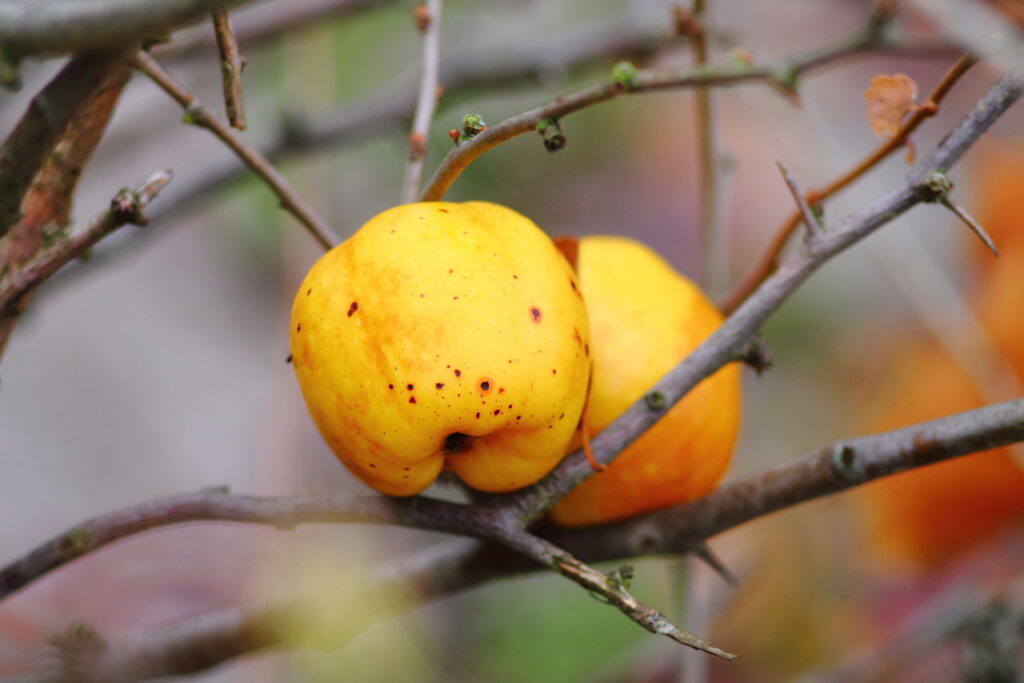The flowering quince, Chaenomeles, is a spreading deciduous shrub that bears clusters of showy flowers in late winter before leaves appear. Blossoms are cup-shaped with 5 petals and up to 60 stamens. Single or double flowers can be solitary or clustered.
Flowering quince has spiny branches. Plants can be used as thorny hedges or barriers. There are a few thornless cultivars. Plants can be trained against a wall.
Pear-shaped yellow-green or purplish fruit develops over the course of the summer and is ready for picking in autumn. The fruit is aromatic and edible. Flowering quince sometimes reblooms lightly in fall.

Get to know Flowering Quince
- Plant type: Deciduous spring-blooming shrub
- Growing Zones and range: Zones 5 to 9
- Hardiness: Hardy
- Height and width: 5 to 10 feet (1.5-3m) tall, 5 to 8 feet (1.5-2.4m) wide
- Foliage: Alternately arranged, simple toothed leaves
- Flowers: Five-petaled cup-shaped single or double blooms are white, red, or pink; blooms are 1 to 2 inches (2.5-5cm) across.
- Fruit: Edible, aromatic, yellow to green or purplish-green fruit produced in autumn; palatable when cooked
- Bloom time: Spring; just as buds begin to swell in early spring, cut branches and bring them indoors to bloom in a vase.
- Uses: Shrub border, hedge, thorny barrier, fruit can be used for preserves
- Common name: Flowering quince
- Botanical name: Chaenomeles species and hybrids
- Family: Rosaceae
- Origin: China and Japan

Where to plant Flowering Quince
- Plant flowering quince in full sun.
- Grow flowering quince in average to heavy clay soil. Plants flower best in well-drained soil and full sun.
- Flowering quince is highly adaptable and will grow under a wide range of conditions
When to plant Flowering Quince
- Set container-grown flowering quince in the garden in spring or fall.
- Sow seed in containers in an open frame or seedbed in autumn.
Planting and spacing Flowering Quince
- Space flowering quince 5 to 8 feet (1.5-2.4m) apart or more depending on the variety.
How to water and feed Flowering Quince
- Flowering quince needs moderate water; keep the soil evenly moist. Established plants are drought-tolerant.
- Flowering quince needs no fertilizer in most conditions.

Flowering Quince care
- Mulch around flowering quince to conserve soil moisture.
- There is no need to trim spent flowering quince blooms.
- Flowering quince blooms on old wood; it is best to leave the plant unpruned except for the removal of dead or damaged wood.
- Prune flowering quince to shape at any time; new growth that follows pruning will bloom the following season.
Flowering Quince common problems
- Flowering quince is susceptible to apple scab, fire blight, and aphids.
Flowering Quince propagation
- Root semi-ripe cutting in summer.
- Layer in autumn.
- Flowering quince can be grown from seed but if a particular flower or color is needed or a specific cultivar, it’s best to purchase a grafted plant.

Flowering Quince varieties to grow
- Chaenomeles japonica, Japanese flowering quince: Low-growing thorny shrub grows to 36 inches 91cm) tall and twice as wide; bears glossy leaves; flowers in clusters of orange to red in early to mid-spring; a good choice for cold winters. There are numerous named cultivars available.
- C. speciosa, flowering quince: Upright, rounded habit grows 6 to 10 feet tall; has shiny bark; flowers are red or orange with some cultivars having white, pink, or peach flowers; good barrier hedge plant; sour fruits are cooked for preserves.
- C. x superba: Grow to 5 feet tall and 6 feet wide; twiggy, thorny, suckering shrub; several cultivars include ‘Apple Blossom’ produces large white flowers flushed with pink, ‘Crimson and Gold’ is compact and spreading; it has dark red flowers with golden anthers, ‘Pink Lady’ is thornless with dark pink flowers.
Flowering Quince frequently asked questions
Q: Are flowering quince and quince the fruit the same plant?
A: No. The botanical name of flowering quince is Chaenomeles speciosa. The botanical name of quince grown for its fruit is Cydonia oblonga. The poem fruit of Cydonia is aromatic bright golden-yellow and similar in appearance to a pear. Ripe quince fruits are hard, tart, and astringent. They are used to make jelly and preserves. Chaenomeles–flowering quince–is one of the first flowering shrubs of spring; the flowers appear before the leaves. The fruits of Chaenomles can be used in any way Cydonia quince is used but their jelly is not equal in flavor.
Q: How do I prune flowering quince, Chaenomeles?
A: Prune Chaenomeles lightly removing dead twigs and branches that grow out of bounds, too high or too low. Light pruning is best so as not to stimulate vigorous growth which may be attacked by fire blight. Fruiting quince, Cydonia, is best pruned the same way.
Q: How can I reduce the height of my flowering quince?
A; Remove a few of the tallest branches one year and a few more the next, so the height is reduced gradually. If you prune severely, the result will likely be an outbreak of fire blight disease.
Q: What soil does quince prefer?
A: Quince prefers somewhat heavy soil that holds some moisture. Space quince plants 8 to 10 feet apart.



